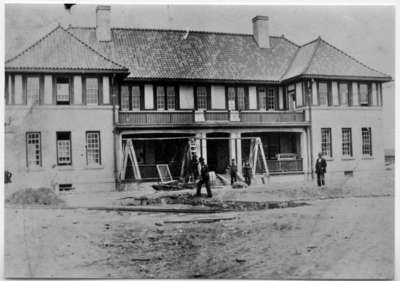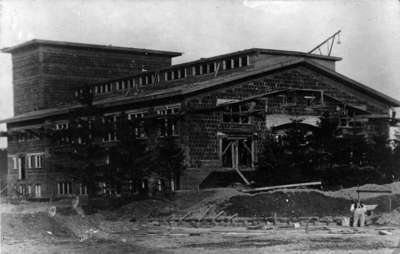A History of Mental Health Facilities in Whitby, 1912 - Present
Constructing Ontario Hospital Whitby, 1913-1917
Pages
The Early Stages, 1912Constructing Ontario Hospital Whitby, 1913-1917The Ontario Hospital Whitby BuildingsOntario Military Convalescent Hospital, 1917-1919Whitby Hospital School of Nursing, 1920-1972Serving Seven Counties, 1919-1996A New Building, 1996-PresentFor Further InformationLinks
Constructing Ontario Hospital Whitby: A Closer LookIn 1911, architect James Govan presented his design for the proposed mental health hospital. Govan's plans consisted of a facility organized into a village-like setting with 16 large cottages nestled among trees and winding avenues. Working with the physicians, Govan situated the cottages so that each one would receive natural sunlight, even in the darker winter months.
On 6 May 1913, the first shovel broke ground on the site for the construction of the new facility. During the initial stages, labour was provided mostly by prisoners from a nearby prison. In order to make the construction of the hospital complex more efficient, a number of services were built on or near the site, including a lumber mill, a boiler, and a concrete mixer. The sand that was used for the concrete to build the cottage foundations was retrieved from Lake Ontario. Transportation of materials was made easier by the construction of a narrow gauge railway that connected to the Grand Trunk Railway (Canadian National Railway)station in Whitby.
By October 1913, most of the foundations were complete. Construction continued slowly during the First World War but many of the buildings were not finished until after the war and some were completed as late as 1926. Patients, however, were transferred from Toronto facilities as soon as the first buildings were completed in 1916.
Click on the link at left to see more images of the construction of the Ontario Hospital Whitby!



